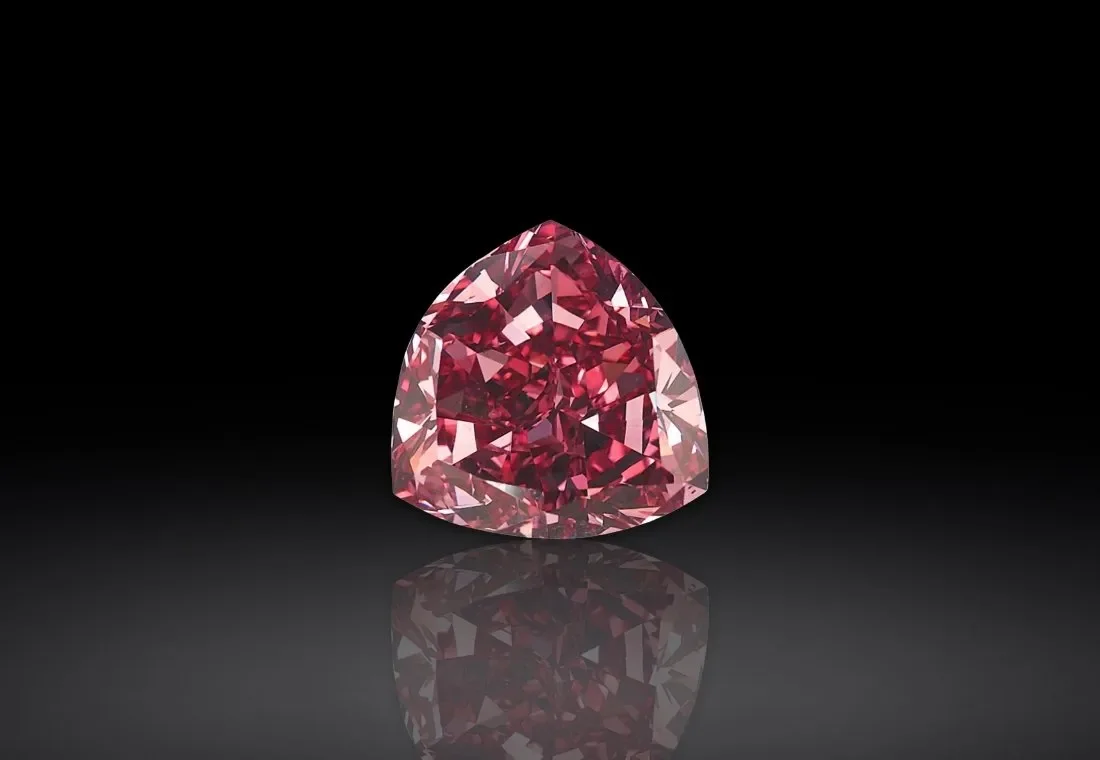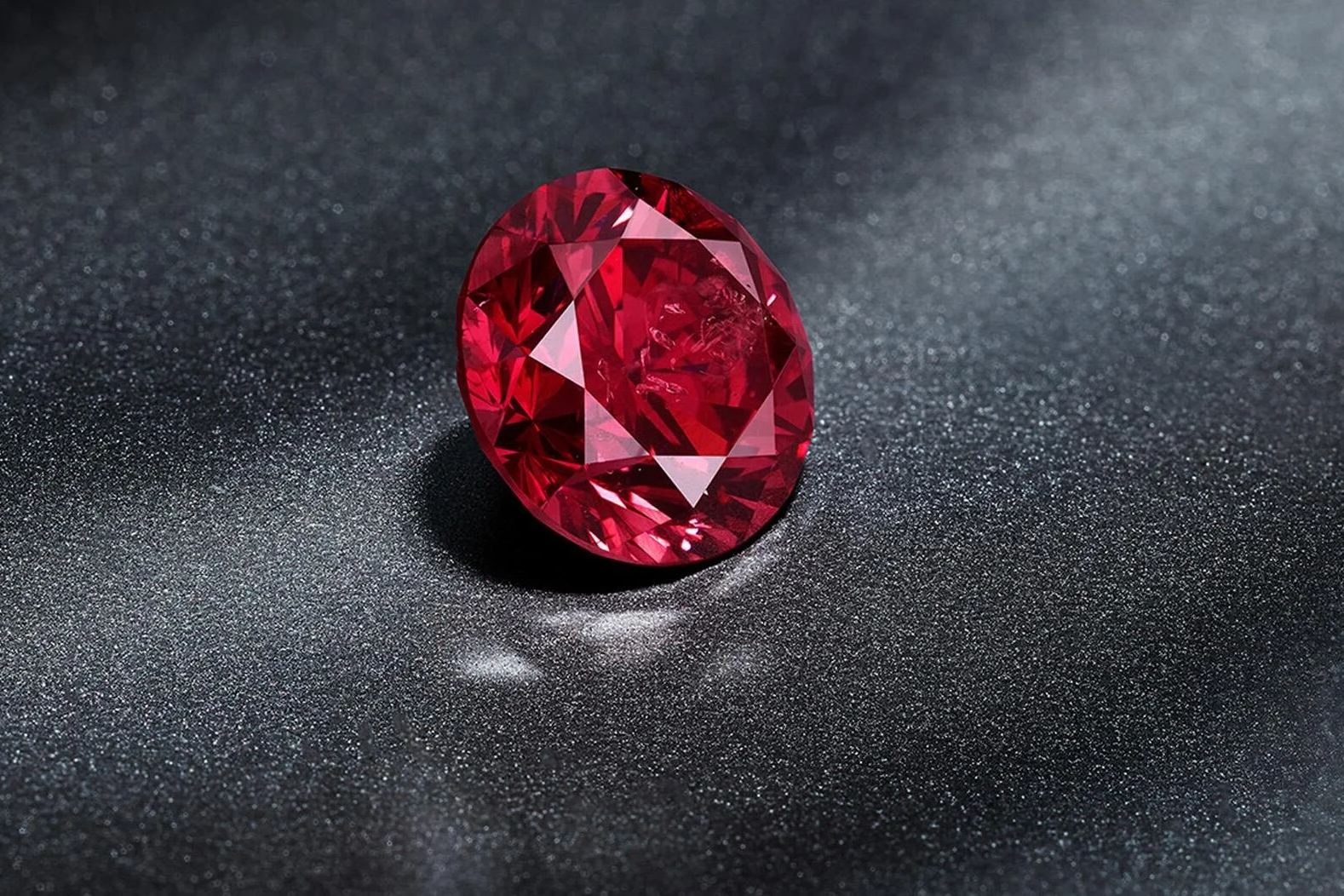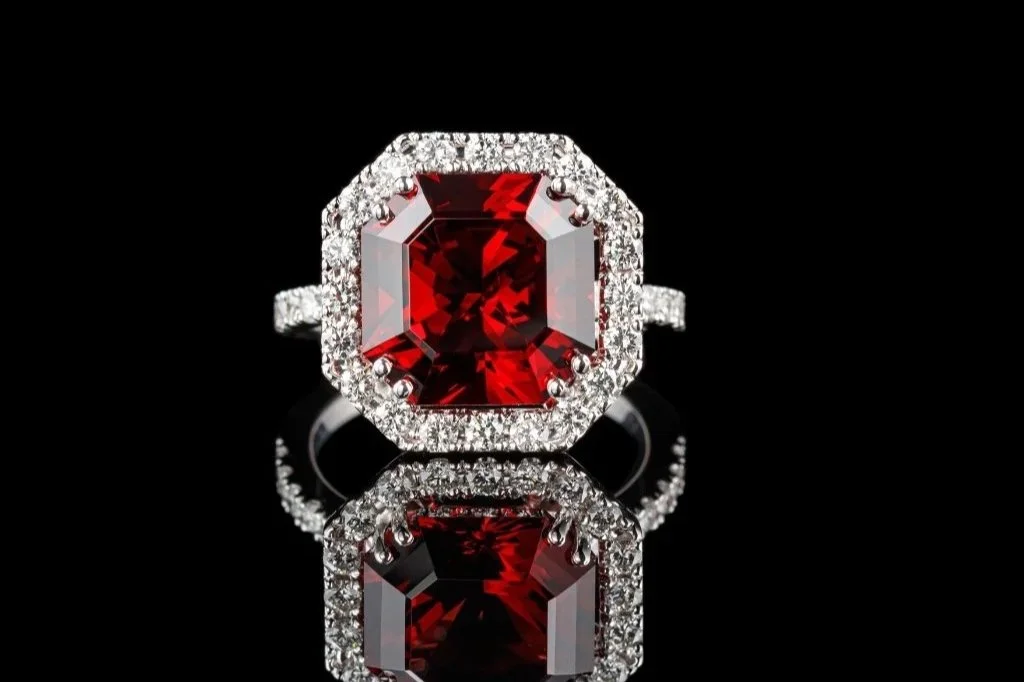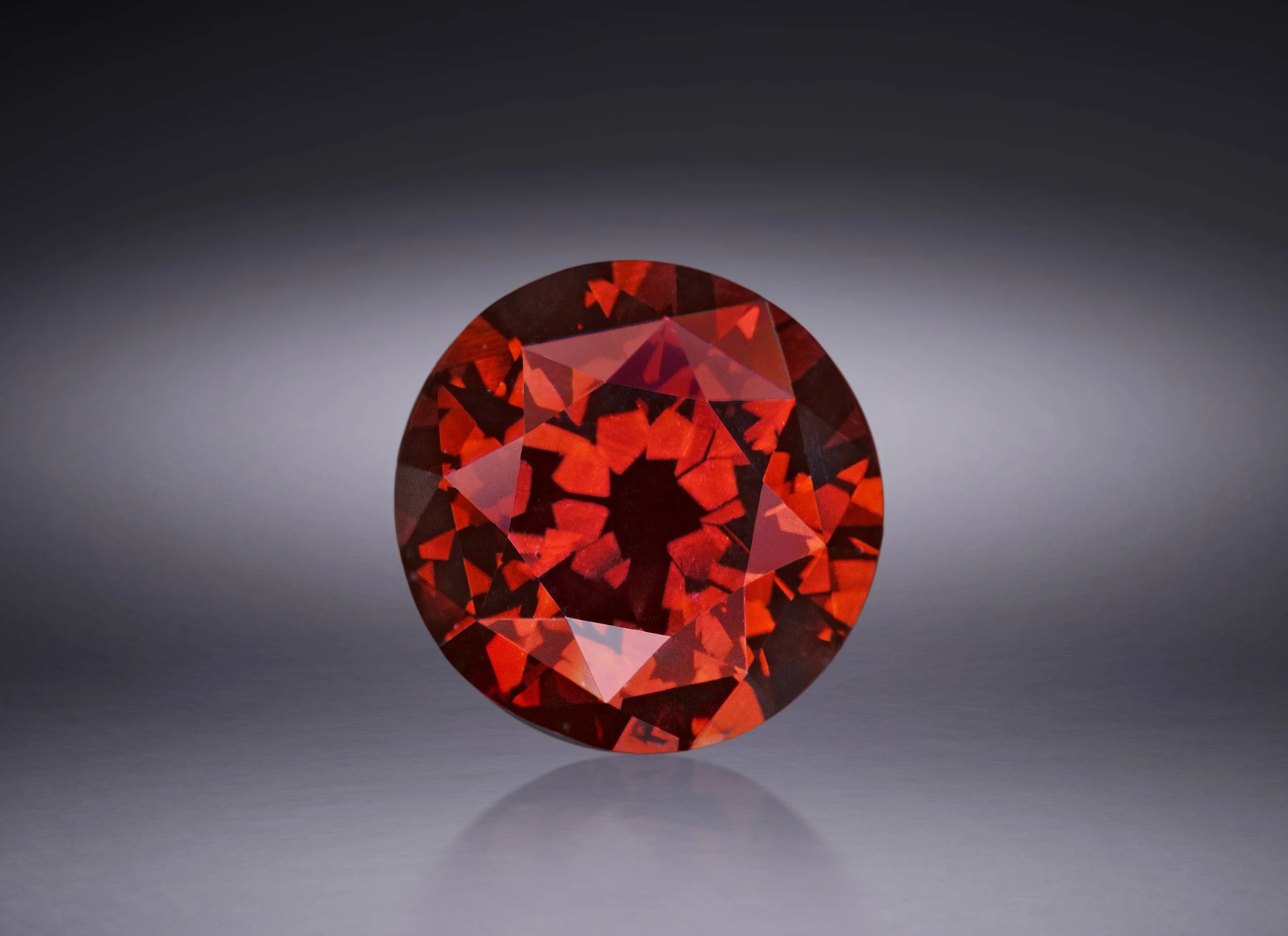Red Diamonds
The Allure of Red Diamonds
Red diamonds are the rarest and most mesmerising of all coloured diamonds, celebrated for their intense fiery hue and unmatched scarcity. Unlike rubies, whose red tones are produced by chromium within corundum, red diamonds are formed entirely of carbon. Their distinctive colour is caused by an extraordinary atomic distortion known as plastic deformation. This natural phenomenon alters the diamond’s internal structure, resulting in a pure crimson hue unlike any other gemstone. Red diamonds are estimated to be over 100,000 times rarer than rubies, making them true marvels of nature and symbols of ultimate exclusivity.
Among all fancy-coloured diamonds, none rival the allure of red diamonds. Their deep, glowing tones and extraordinary scarcity make them some of the most coveted treasures in the world. Unlike other coloured diamonds, which owe their colour to trace elements, red diamonds derive their beauty purely from their structure. This rare distortion in the atomic lattice continues to intrigue gemmologists and collectors alike. Their rarity and breath-taking beauty ensure that they remain among the most valuable gemstones ever discovered.
This guide explores the origin, formation, and enduring appeal of red diamonds — examining what makes them such extraordinary symbols of rarity, luxury, and investment.
What Is a Red Diamond?
A red diamond is a natural fancy-coloured diamond that displays a pure, vibrant red hue with little to no secondary tones. Unlike other coloured diamonds, which gain their hues from chemical impurities such as nitrogen or boron, red diamonds achieve their colour through unique structural distortions that affect how light passes through the crystal. The resulting appearance can range from soft pinkish-red to a deep, intense crimson reminiscent of the finest ruby.
Although they share certain visual similarities with pink diamonds, the depth of their colour sets them apart. Most red diamonds are extremely small, often weighing less than one carat, and larger examples are almost unheard of. Their perfect combination of rarity, natural intensity, and geological mystery has made them some of the most desirable and valuable gemstones in existence.
How Are Red Diamonds Created?
The creation of red diamonds is one of nature’s most exceptional geological events. Their colour arises from a phenomenon known as plastic deformation, in which the diamond crystal undergoes immense pressure deep within the Earth’s mantle. This pressure distorts the diamond’s atomic structure, creating minuscule defects that alter the way light travels through the stone, giving rise to its rich red colour.
Because these conditions occur so rarely, red diamonds have been found in only a few places on Earth. For decades, the Argyle Mine in Western Australia was the most significant source, producing a small number of the finest examples ever recorded. However, red diamonds have also been unearthed in Brazil, Russia, and Africa, though only in minute quantities. With the closure of the Argyle Mine in 2020, natural red diamonds have become even scarcer, driving both demand and value to unprecedented levels.
The Rarity of Red Diamonds
Red diamonds stand alone as the rarest of all natural fancy-coloured diamonds. Fewer than thirty genuine specimens are believed to exist worldwide, and most of them weigh under one carat. Unlike blue, pink, or yellow diamonds, which are mined in various regions, red diamonds appear only in isolated discoveries.
During the Argyle Mine’s decades of production, red diamonds represented just a fraction of a fraction of its total yield. Since its closure, their scarcity has reached historic levels, with few, if any, new stones entering the market. Their extreme rarity, coupled with their unmatched colour and history, makes them highly sought-after by collectors and investors who recognise them as some of the most exclusive natural treasures in existence.
The Value of Red Diamonds
Red diamonds command extraordinary prices, reflecting their unique status in the world of fine gemstones. Their value typically ranges from around one million to more than two and a half million US dollars per carat, depending on factors such as colour intensity, clarity, and size. While most diamonds are assessed based on the traditional “4Cs” — colour, cut, clarity, and carat — red diamonds are valued primarily for the purity and strength of their colour.
Because of their extreme scarcity, each stone is effectively one of a kind. Collectors and investors view red diamonds not only as objects of beauty but as tangible stores of wealth, comparable to the finest works of art. As global demand grows and natural supply vanishes, these diamonds continue to appreciate, confirming their position among the most valuable investments in the world of luxury gemstones.
How Red Diamonds Are Graded
Like all fancy-coloured diamonds, red diamonds are graded according to their hue, tone, and saturation. The Gemological Institute of America (GIA) classifies fancy colours using terms such as Fancy Light, Fancy, Fancy Intense, Fancy Vivid, and Fancy Deep. However, because of their rarity, red diamonds typically fall within a much narrower grading range.
Most are categorised simply as Fancy Red, with some showing secondary hues such as purplish-red or brownish-red. The purest and most vibrant reds — entirely free from modifying tones — are extraordinarily rare and command record-breaking prices at auction. These exceptional specimens represent the pinnacle of beauty and rarity in the world of diamonds.
Famous Red Diamonds
The Moussaieff Red
The Moussaieff Red is the largest known red diamond in existence, weighing an astonishing 5.11 carats. Graded as Fancy Red by the Gemological Institute of America (GIA), it holds one of the rarest colour designations ever given to a diamond. Originally discovered in Brazil, this magnificent gemstone was later acquired by Moussaieff Jewellers, securing its place among the most valuable and celebrated diamonds in history.
The Moussaieff Red Diamond (Courtesy of Diamond Buzz)
The Hancock Red
Weighing only 0.95 carats, the Hancock Red is renowned for its exceptional colour saturation and intensity. Despite its modest size, it achieved global recognition in 1987 when it sold at auction for a record-breaking price per carat. Its vivid hue and impeccable provenance make it one of the most historically significant red diamonds ever found.
The Hancock Red (Courtesy of National Jeweler)
The Kazanjian Red
The Kazanjian Red, weighing 5.05 carats, was discovered in South Africa and initially mistaken for a ruby due to its deep crimson colour. Later confirmed as a natural diamond, this gem has a captivating history — it was hidden during World War II to protect it from seizure and only resurfaced decades later. Today, it remains one of the world’s most fascinating red diamonds.
The Kazanjian Red (Courtesy of Vasco Assets)
The DeYoung Red Diamond
The DeYoung Red Diamond weighs 5.03 carats and stands among the largest red diamonds ever discovered. Now part of the Smithsonian Institution’s renowned collection, it attracts thousands of visitors each year who marvel at its rarity and mesmerising hue. Its presence in one of the world’s leading museums highlights its importance as a gem of exceptional beauty and geological significance.
The DeYoung Red Diamond (Courtesy of Smithsonian National Museum)



